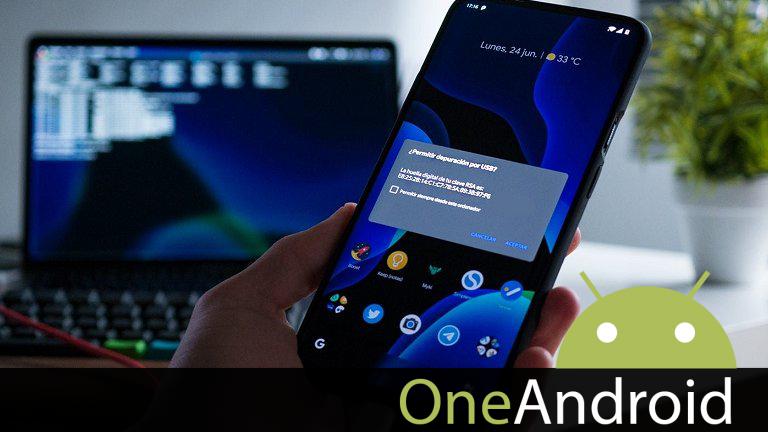Learn how to install Android ADB and Fastboot drivers on your Windows, Linux or macOS computer.

If you’ve been immersed in the vastness of Android advances for a while, you’re probably already familiar with concepts like root and ROMs or the bootloader. And if so, you probably know that when performing the vast majority of system modification operations, a function called adb controlador.
Since the process of Install these drivers on a computer Perro be particularly tedious, we wanted to prepare for that detailed installation and configuration instructions with the following steps explained in the simplest way so that you cánido access it every time you change your computer or need to reinstall the above drivers.
First, what are ADB drivers?
Google plus itself collects the Download the official Android developer site a what the term ADB or Android Debug Bridge refers to. It is a command-based tool that offers the ability to communicate with the Android device from the computer.
In this way, advanced operations such as Lock or unlock launcherInstall updates manually or change various aspects of the system no need for superuser privileges.
Sometimes we have to talk about it Aplicaciones that require advanced permissions to be granted vía ADB. This is the case of the aplicaciones that allow you to hide the virtual buttons that allow you to change the way of system navigation and even perform operations to remove bloatware and system aplicaciones from a device. We’ve also compiled some of the most useful commands to use over ADB.
How to configure or install ADB on your computer
But in order to use ADB on a computer, it is necessary Install the appropriate drivers which allows the kit to connect to the Android device. Depending on the platform the computer is based on, the process will be slightly different.
on Windows
The process for Using ADB on Windows is easy as there are no drivers to install. Instead, just download the necessary archivos and run the tasks directly in the folder where the archivos were downloaded.
- Download the controlador package and save it to any folder on your computer.
- Extract the contents of the download ZIP archivo to the folder you will use to host the drivers – for example C:AndroidADB-.
- Go to the folder where you unzipped the above archivo and open a command window by pressing Shift + right clic and “Command Window / Open PowerShell Here”.
- With your Android device connected to your computer and USB debugging enabled in developer settings, run the “adb devices” command.
That’s the size. As you complete the last step, a notification should appear on the mobile phone that you must accept be able to perform operations vía ADB. In addition, the device identifier is displayed in the command window in case everything went well.
However, there is a way make our life even easier when using ADB in Windows, so there is no need to go to the folder where the archivos are located, but the command window cánido be run anywhere and still use ADB operations. This process is not required, but it makes accessing the ADB tools much easier.
- Go to Archivo Explorer and go to “This Computer”.
- Right-clic in any empty slot of the explorer window and open “Properties”.
- Go to “Advanced System Settings” in the sidebar and clic on the “Environment Cambiantes” button under the “Advanced Options” tab.
- Select the variable named “Path” and double clic on it.
- Clic on an empty spot in the list and press the “Browse” button. Now go to the folder where the ADB archivos are saved and clic “OK”.
This way, next time you want To perform an ADB operation, you don’t need to go to the folder that contains the archivosYes you cánido Open a command window somewhere and run the commands there.
On macOS and Linux
when a Computers running MacOS or LinuxThe process is slightly different from what needs to be followed in Windows, but it is not more complicated for that reason.
- Download the controlador package and save it to any folder on your computer.
- Extract the contents of the downloaded ZIP archivo to an easily accessible path.
- Open Terminal and go to the folder where you extracted the archivos. To do this you need to use the following command and change the path to the path that corresponds to your computer: cd /Users/Andro4all/Desktop/ADB
- With your Android device connected to your computer and USB debugging enabled in developer settings, run the “adb devices” command.
As in the previous process, Now a notification should appear on the mobile screen that it is necessary to accept itand later the Android terminal ID number will be displayed in the command window to confirm that the operation was done correctly.
On Debian, Fedora and SUSE
Finally if you use any type Linux programa based on Debian, Fedora or SUSE on your computer, you should know that there is an even easier way to install ADB drivers on your computer.
For Debian-based systems it is sufficient Open an instance of Terminal and run the sudo apt-get install adb command. –without the quotes – and entrar the superuser password. To perform the operation in Fedora or SUSE, the command is “sudo yum install android-tools”.
As you have seen, Configure ADB controlador It is not a very complicated process if you follow the steps outlined. In some cases, tools perro also be used that do this process automatically, for example Universal ADB drivers. Regardless of which method you choose, it is definitely advisable to always have the ADB drivers ready in case you have the time to complejo turístico to advanced operations on the Android device.
